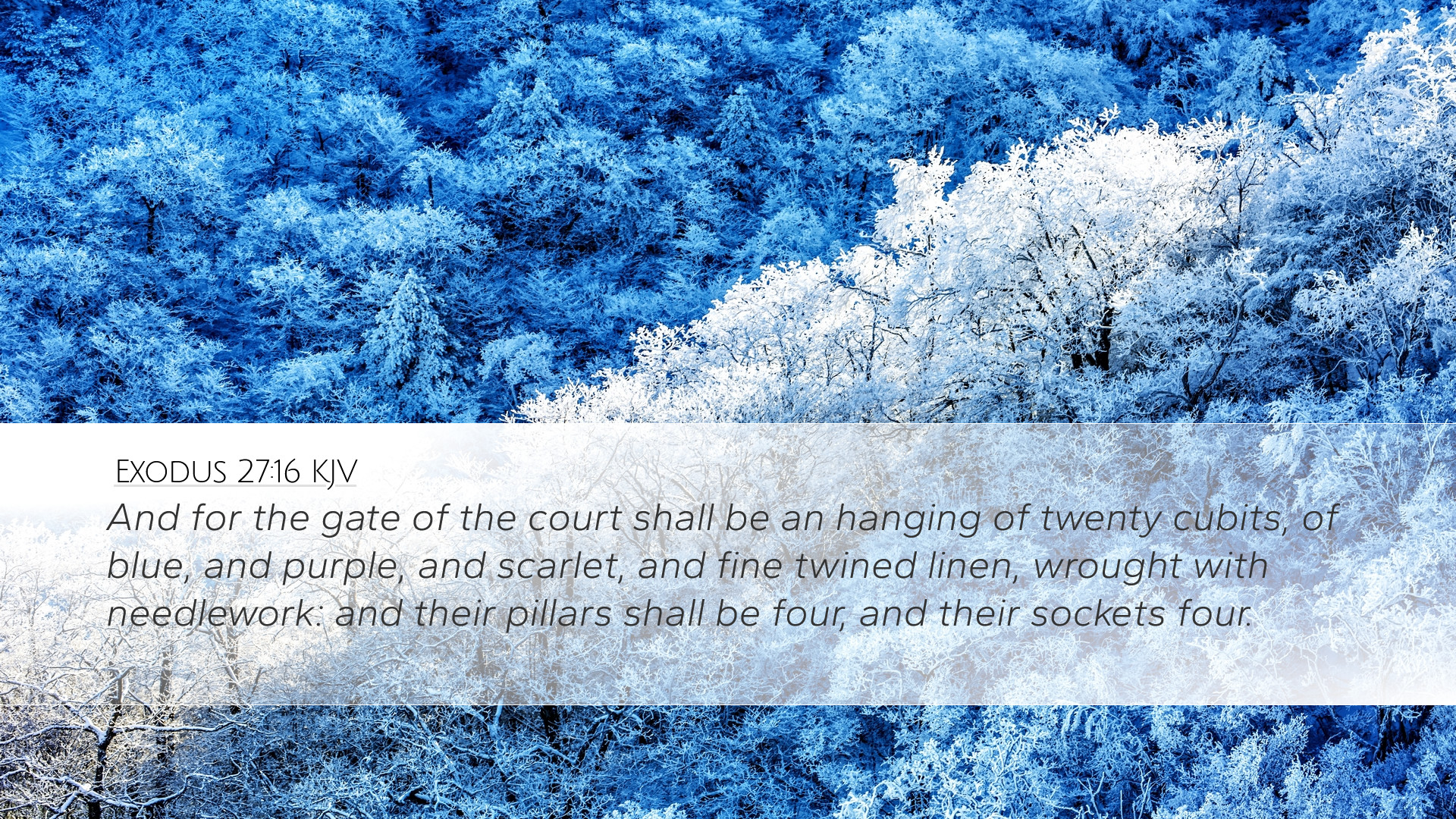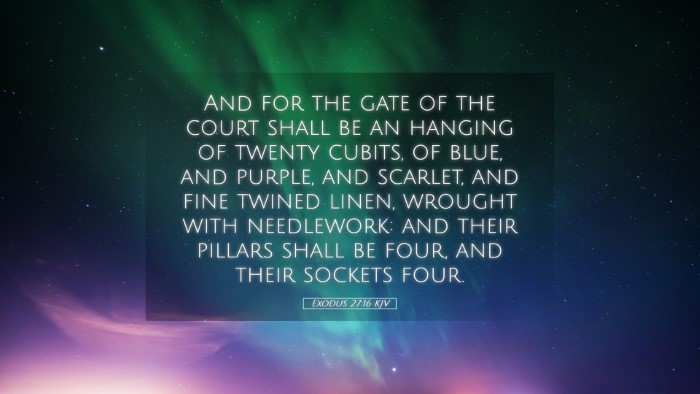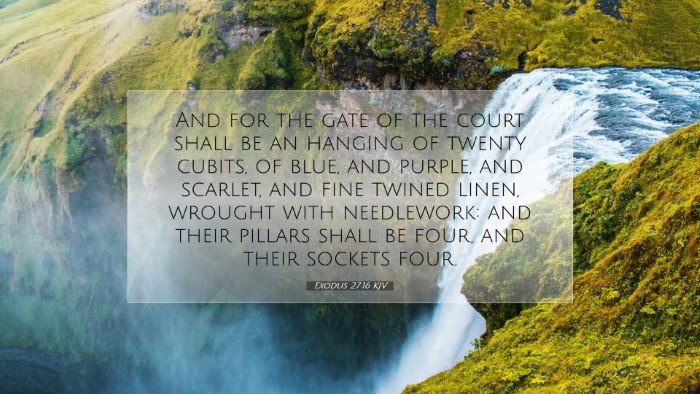Bible Commentary on Exodus 27:16
Verse: Exodus 27:16 - "And for the gate of the court shall be a hanging of twenty cubits, of blue, and purple, and scarlet, and fine twined linen, wrought with needlework: and their pillars shall be four, and their sockets four."
Introduction
This verse describes the specifications for the gate of the outer court of the tabernacle. It is part of a broader narrative that provides intricate details on the construction and furnishings of the tabernacle, which served as the dwelling place of God among His people in the wilderness. Understanding this verse offers profound insights into God’s character, His approach toward worship, and the significance of symbolism in Biblical texts.
Commentary Insights
1. The Significance of the Gate
Matthew Henry emphasizes that gates are often seen as points of entry and access. The gate represents the approach to God. In biblical typology, Jesus Christ is referred to as the gate or door through which believers must enter to access fellowship with the Father (John 10:9). Thus, the gate signifies the necessity of a rightful approach to God, through the means He has provided.
Albert Barnes highlights that the curtain's colors—blue, purple, and scarlet—are rich and royal hues. This denotes the dignity and holiness associated with approaching God. Each color can symbolize some aspect of Christ's work and nature: blue representing His heavenly origin, purple His royal status, and scarlet denoting His sacrificial blood.
2. The Symbolism of Fabrics and Colors
Blue symbolizes the divine, reminding worshippers that they must approach God through His heavenly mediation. Purple signifies majesty and royalty, perpetuating the idea that worship is due to the King of Kings. Scarlet signifies the blood of the covenant, which points to the sacrificial atonement of Christ.
Adam Clarke notes that the "fine twined linen" suggests purity and holiness, emphasizing the need for moral and spiritual cleanliness before entering God's presence.
3. The Structure and Arrangement
This verse elaborates on the physical structure of the gate, detailing its dimensions and the number of pillars. The design of four pillars may symbolize global accessibility, as four is often associated with the four corners of the earth, suggesting that the way to God is open to all nations.
Matthew Henry posits that the four pillars represent stability and strength, assuring those who gather that the way to God is securely established. The four sockets correspond to foundational truth; they hold up the physical barrier while embodying spiritual truths that underpin access to God.
4. Practical Application for Worship
Pastors and students can glean that the care in the construction of the gate reminds believers of the importance of reverence and respect in worship. As worship leaders, they are called to guide congregations to honor God when entering His presence, reflecting on the significance of intention and preparation.
Albert Barnes reflects on the need for diligence in worship practices, drawing comparisons to how believers today must prepare their hearts with the same seriousness that the Israelites prepared their offerings and their approaches to God.
5. The Role of the Community
The communal aspect of worship is highlighted in this gate. Just as the tabernacle was a central place for communal worship, the structure of the gate invites the whole congregation to enter collectively into God’s presence. This reminds modern believers of the importance of gathering as the body of Christ.
Adam Clarke stresses that the tabernacle served not only individual worshippers but the entire community of Israel. This underlines the importance of corporate worship, fellowship, and the shared responsibilities of the body of believers in drawing near to God.
Conclusion
Exodus 27:16 offers layers of meaning, rich with theological implications for worship. The careful design of the gate, the significance of its colors, and its structural elements reflect God’s majesty and holiness while inviting believers into His presence. Understanding these dimensions allows pastors, students, theologians, and scholars to appreciate the richness of God’s revelation and Christ’s fulfilling of the law. It encourages deeper reflection on how worship must be approached with reverence and an understanding of the significance behind every detail laid out in the tabernacle's design.


